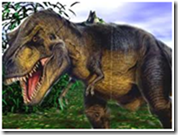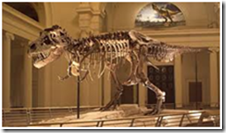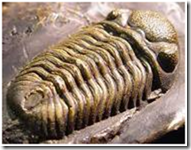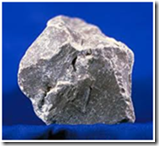Sorry that I did not update last week but we had camp so I got delayed! 🙁
But here it is now! 🙂
Fossils played a very important role in the work of paleontologists (The kind of scientist that studies fossils). Did you know that they helped people realize that ancient mythical creatures called “dragons” turned out to be “dinosaurs”? The discovery of these preserved stones has led to a big change in how people thought about those extinct creatures that lived long ago on earth. Some of these creatures that lived long ago include ammonites and dinosaurs; the most fearsome of all is the Tyrannosaurus Rex (a species of dinosaurs). You may have seen it in Jurassic Park tearing up a person and eating it.
Have you ever wondered how fossils form? First let’s start with the cycle of fossils. Let’s say an ammonite dies in the sea and its shell falls to the ground. After some time it gets covered by sand, rock and other things that can be turned into mud (in time!). Then it turns really hard and gets covered by more mud and other things that fall into the sea. After millions and millions of years the shell will wear out or dissolve (the insides have decayed already…) but an imprint of the ammonite is still there. Coal was made this way by old and ancient swamps where dead animals and plants got covered by layers of rocks and mud and pressure was building up over the years and then the old swamps turned into coal. But that’s another story…
What kinds of animals are trapped in these amazing little rocks? Like I said, ammonites which are shell-living creatures or mollusks are quite interesting. In some parts of medieval Europe ammonites were thought to be petrified coiled snakes and were also called two other names, snakestones or serpentstones and were thought to have magic healing powers. Another example is the trilobite. Trilobites are a kind of bug type creature with an ovular body and lots of legs. Trilobites are named so because their body is like in three parts, tri means three. Trilobites are quite the most common mostly in books and movies as a little bug thing crawling about. In the beginning of the movie “Journey to the Center of the Earth,” a trilobite was crawling around a big crevice filled with lava at the bottom (I think). Lastly, dinosaurs are the incredible reptilian creatures that have lived for millions of years. Most fossils of dinosaurs you can find are now in museums around the world as bones (there can be replicas also). They got dug up or got to the surface by erosion.
If you are trying to find a fossil on your own, try the beach, there are a lot of limestones (a limestone is a rock where some fossils are imprinted the most) in the beach. If you find one, crack it open with a hammer and chisel. If not, keep looking or buy one from a fossil and gemstone shop. The world is full of these interesting rocks and you can examine them in museums up close! If you are interested why not try being a paleontologist yourself. Fossils may be hundreds of years old and sometimes fragile and even hard to find, but even so fossils are the most interesting things discovered that tells us about the history of creatures that lived long ago. The world is full of these bones and plants implanted on these rocks so even maybe if you have a coal rock take a closer look at it, who knows, maybe there could be one of those creatures that lived long ago. Fossils are amazing and are truly the clues to the past.
This is what an ammonite would look like.

This is the fossil of an ammonite.

This is what a Tyrannosaurus Rex might look like.

These are the bones of a T-Rex called Sue. It is the famous one.

This is a fossil of a trilobite.

This is limestone; you can find a large kind of cliff in the beach made of limestone.

Links:
http://en.wikipedia.org/wiki/Limestone
This is the link for limestone.
http://dsc.discovery.com/dinosaurs/
This is the link for dinosaurs.
http://www.trilobite.com/
This is the link for trilobites.
http://animals.nationalgeographic.com/animals/prehistoric/ammonites/
This is the link for ammonites.










